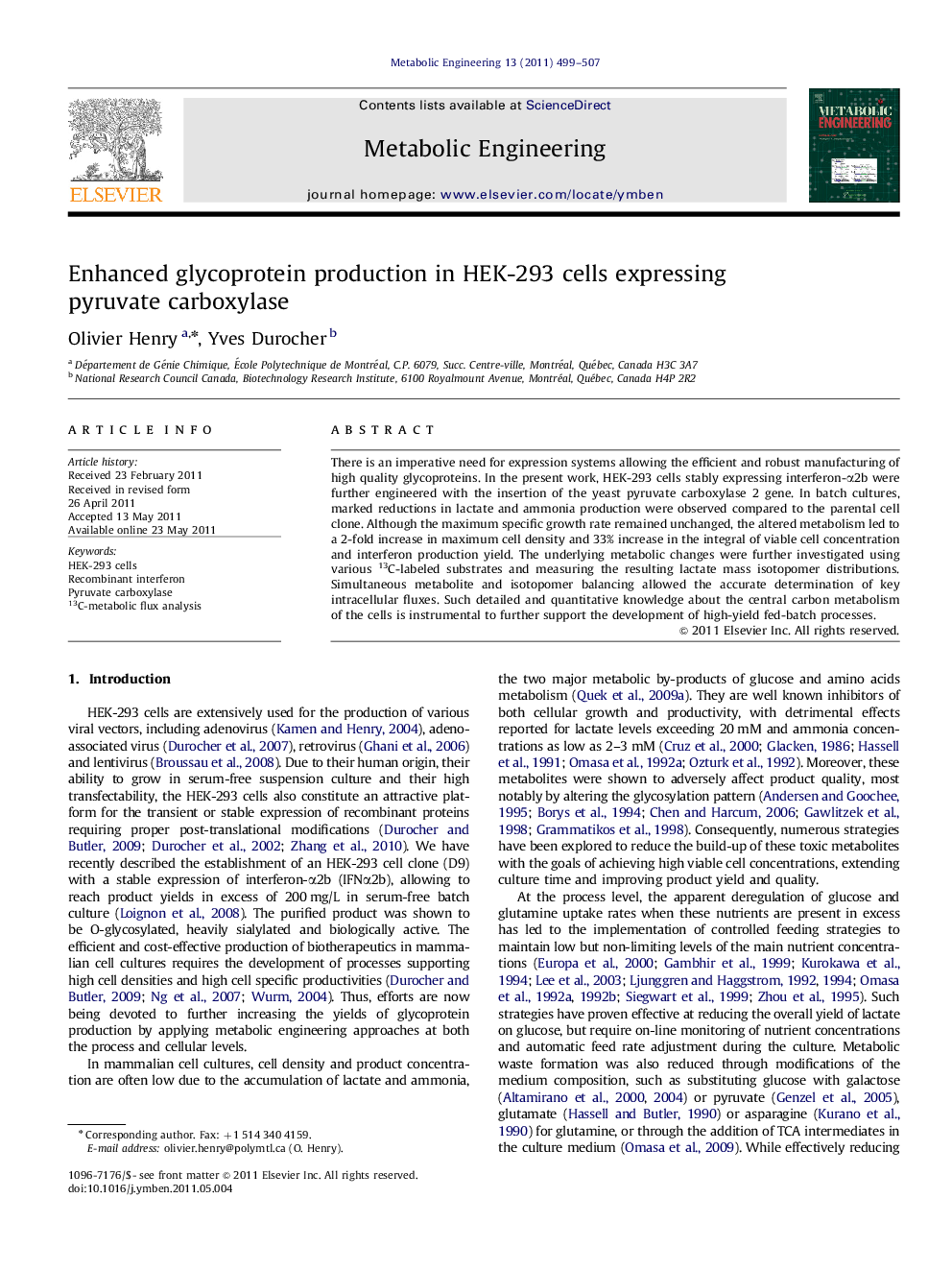| Article ID | Journal | Published Year | Pages | File Type |
|---|---|---|---|---|
| 31609 | Metabolic Engineering | 2011 | 9 Pages |
There is an imperative need for expression systems allowing the efficient and robust manufacturing of high quality glycoproteins. In the present work, HEK-293 cells stably expressing interferon-α2b were further engineered with the insertion of the yeast pyruvate carboxylase 2 gene. In batch cultures, marked reductions in lactate and ammonia production were observed compared to the parental cell clone. Although the maximum specific growth rate remained unchanged, the altered metabolism led to a 2-fold increase in maximum cell density and 33% increase in the integral of viable cell concentration and interferon production yield. The underlying metabolic changes were further investigated using various 13C-labeled substrates and measuring the resulting lactate mass isotopomer distributions. Simultaneous metabolite and isotopomer balancing allowed the accurate determination of key intracellular fluxes. Such detailed and quantitative knowledge about the central carbon metabolism of the cells is instrumental to further support the development of high-yield fed-batch processes.
► Engineering of HEK-293 cells expressing interferon and the PYC gene. ► Marked reduction in lactate formation and 2-fold increase in maximum cell density. ► 33 % increase in interferon production yield. ► Metabolic flux analysis using 13C-tracers and lactate isotopomer analysis.
